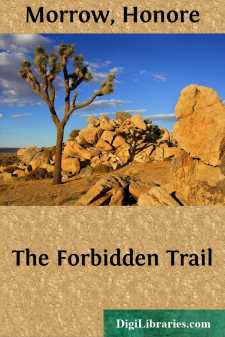Categories
- Antiques & Collectibles 13
- Architecture 36
- Art 48
- Bibles 22
- Biography & Autobiography 813
- Body, Mind & Spirit 142
- Business & Economics 28
- Children's Books 17
- Children's Fiction 14
- Computers 4
- Cooking 94
- Crafts & Hobbies 4
- Drama 346
- Education 46
- Family & Relationships 57
- Fiction 11829
- Games 19
- Gardening 17
- Health & Fitness 34
- History 1377
- House & Home 1
- Humor 147
- Juvenile Fiction 1873
- Juvenile Nonfiction 202
- Language Arts & Disciplines 88
- Law 16
- Literary Collections 686
- Literary Criticism 179
- Mathematics 13
- Medical 41
- Music 40
- Nature 179
- Non-Classifiable 1768
- Performing Arts 7
- Periodicals 1453
- Philosophy 64
- Photography 2
- Poetry 896
- Political Science 203
- Psychology 42
- Reference 154
- Religion 513
- Science 126
- Self-Help 84
- Social Science 81
- Sports & Recreation 34
- Study Aids 3
- Technology & Engineering 59
- Transportation 23
- Travel 463
- True Crime 29
Lydia of the Pines
by: Honore Morrow
Description:
Excerpt
CHAPTER I
THE TOY BALLOON
"I am the last of my kind. This is the very peak of loneliness."—The
Murmuring Pine.
There is a State in the North Mississippi Valley unexcelled for its quiet beauty. To the casual traveler there may be a certain monotony in the unending miles of rolling green hills, stretching on and on into distant, pale skies. But the native of the State knows that the monotony is only seeming.
He knows that the green hills shelter in their gentle valleys many placid lakes. Some of them are shallow and bordered with wild rice. Some are couched deep in the hollow of curving bluffs. Some are carefully secreted in virgin pine woods. From the train these pines are little suspected. Fire and the ax have long since destroyed any trace of their growth along the railway.
Yet if the traveler but knew, those distant purple shadows against the sky-line are primeval pine woods, strange to find in a State so highly cultivated, so dotted with thriving towns.
In summer the whole great State is a wonderland of color. Wide wheat lands of a delicate yellowish green sweep mile on mile till brought to pause by the black green of the woods. Mighty acres of corn land, blue-green, march on the heels of the wheat. Great pastures riotous with early goldenrod are thick dotted with milk herds. White farmhouses with red barns and little towns with gray roofs and green shaded streets dot the State like flower beds.
An old State, as we measure things out of New England, settled by New Englanders during the first great emigration after the War of 1812. Its capital, Lake City, lays claim to almost a century of existence. Lying among the hills in the northern part of the State, it contains both the state capitol and the state university. Of its thirty thousand inhabitants, five thousand are students and another five thousand are state legislators and state employees.
The town is one of quiet loveliness. It lies in the curving shore of one of the most beautiful of the little inland lakes. The university campus lies at the northern end of the curve. The dome of the capitol rises from the trees at the southern end. Between, deep lawns stretch to the water's edge with fine old houses capping the gentle slope of the shore. Inland lies the business section of the town, with the less pretentious of the dwellings. The whole city is dotted with great elms and maples, planted three quarters of a century ago.
A quiet town, Lake City, with an atmosphere that might well belong to
New England,—beauty, culture, leisure, are its hallmarks.
Fifteen years ago half a mile inland from the lake was an empty block that once had been a farm pasture. Three fine old oaks stood with tops together in the center of the block. The grass was still firm and green and thick in the ancient pasture except for narrow trails worn by children's feet. To the initiated each trail told its own story. There was a hollow square that formed the baseball diamond. There was a straight, short cut that led to the little cress-grown spring....








